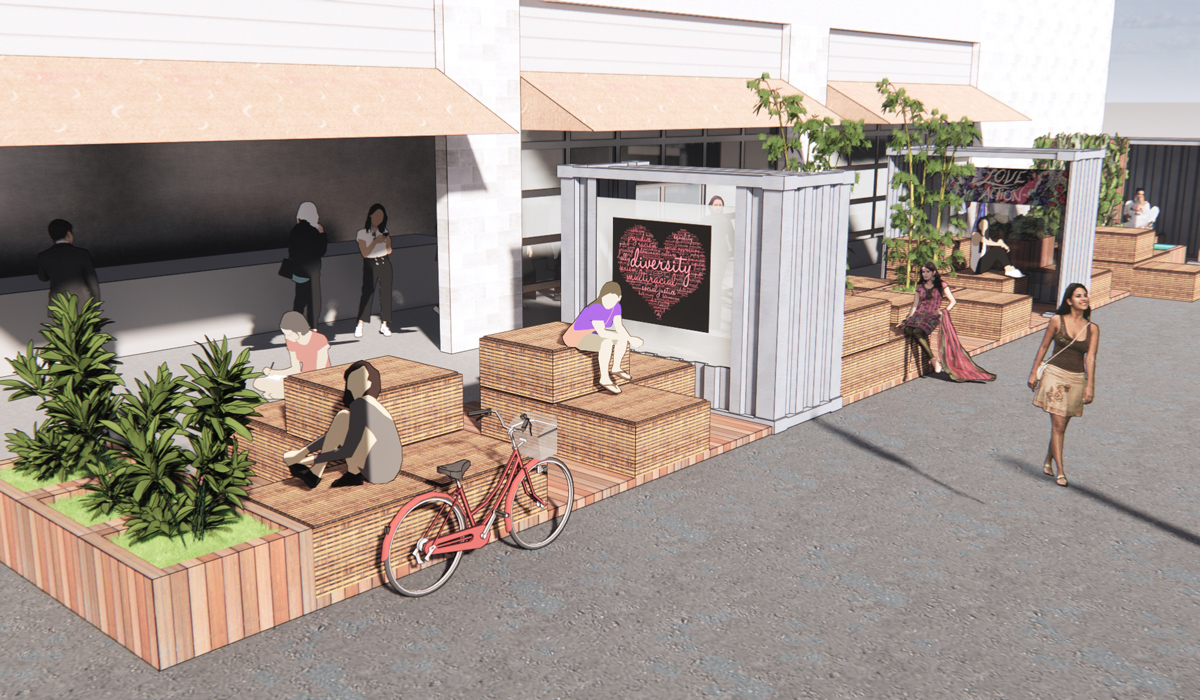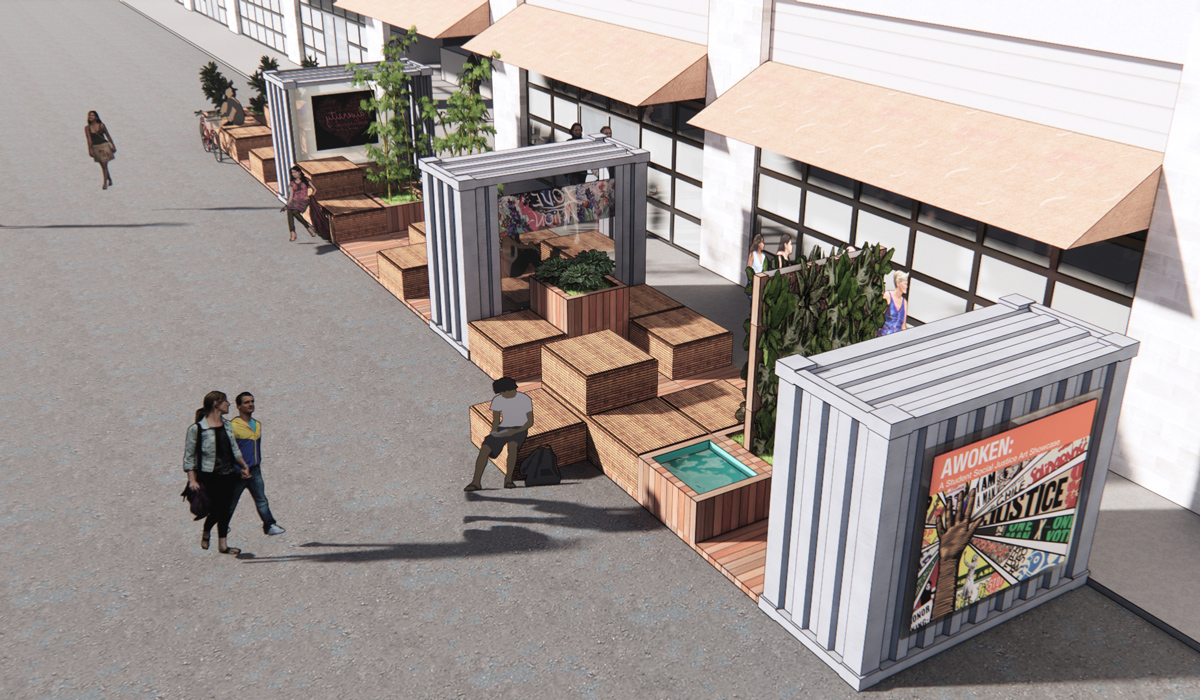

How can architects design spaces for leisure and community, with public health in mind? That was the question at the heart of an Urban Design Studio course taught by Architecture Professor Georgeanne Matthews this fall.
The course, which was available to first- and second-year graduate students, included assignments to allow for safe gathering in a time of social distancing. The first project for the course was a pop-up structure that businesses could set up on sidewalks or in driveways to encourage socially distanced dining or gathering.
“The challenge was, how can you make this economically feasible while also creating something that can be flat packed, set up, then put into storage to be reused later?” Matthews said. “We also wanted it to be beautiful, something people would want to experience, sit in, and enjoy a moment outside.”
"This course is on the ground and responding to a real crisis, and analyzing the urban context of a real neighborhood, which is currently being developed. With our school’s location, we are right here adjacent to some of the oldest and liveliest neighborhoods in the city. To be able to go outside and use Washington, D.C., as our classroom is an extraordinary opportunity.”
Another goal of the course, Matthews said, was to help students think about their designs in a holistic way — ensuring they fit with the scale of the local environment and are able to meet the needs of the local community.
For one assignment, the course looked specifically at Washington, D.C.’s Union Market neighborhood. Students were tasked with designing a complete neighborhood plan for the district, keeping in mind the need for affordable housing, public amenities, open green space, and accessible community buildings.
The final assignment was for students to design a community resiliency center which could be adapted to provide necessary functions in emergency situations. This assignment was a response to D.C. Mayor Muriel Bowser’s resiliency plan, which asked for spaces that are flexible enough to be activated by FEMA for use in emergency situations, like natural disasters or the ongoing pandemic.
“The city is in desperate need of spaces that can become COVID testing or vaccination centers and help sustain community engagement during extended lockdowns. Our students are great designers and are meeting that challenge,” Matthews said. “We hope this project will be a model to help neighborhoods fluidly mount a community response after a disaster or systemic shock.”
Mara Walsh is in the first year of her graduate program after finishing her bachelor’s in architecture last May. She enjoyed taking the urban design course and engaging with Washington, D.C., in a new way.
“It’s really fun and unique to be able to design based on what’s happening in the world today,” she said. “As bad as the pandemic is, it has really made us think and consider what we’re designing for. We want to design buildings that will last 100 years — not just 10 years. This helps us think about the ways we can lay out a building so that it will be used in many different ways.”
When designing the neighborhood plan for Union Market, Walsh worked with a team to consider how they could transform the community into a “live, work, grow” community with affordable housing, food options, and an urban farm where people could learn to grow their own food. Walsh designed her resiliency center to have a focus on mental and physical wellness, and include spaces for studying, socializing, and hosting activities. In times of crisis, the center could be adapted as a place to provide COVID-19 testing, shelter, or food and other resources.
Adriana Torres-Sejas, a second-year graduate student originally from Bolivia, is in the process of designing a resilience center located in San Juan, Puerto Rico, an area still recovering after the devastation of Hurricane Maria in 2017. She said she was inspired by her childhood experiences spending time in a community center in Arlington, Va.
“I want to design a community center where people can explore, volunteer, take classes to prepare for future natural disasters, and at the same time a building that can be activated during a crisis to help the community become responsive and resilient,” she said.
At the end of the course, Matthews invited outside architects and city planners to come and review the student designs.
“The whole point of this course is to take architecture into the real world where, prior to this, student designs may have been more hypothetical,” Matthews said. “This course is on the ground and responding to a real crisis, and analyzing the urban context of a real neighborhood, which is currently being developed. With our school’s location, we are right here adjacent to some of the oldest and liveliest neighborhoods in the city. To be able to go outside and use Washington, D.C., as our classroom is an extraordinary opportunity.”
Matthews said she hoped the course would help students to better understand how architecture can serve the greater good.
“There are so many challenges facing us globally and in the United States, and architects in particular have an opportunity to impact every structure and space we inhabit on the planet,” she said. “One of the things the students talked about was how passionate they were about these projects, because they’re timely, and in their own city. It feels like they’re going to make a difference.”


